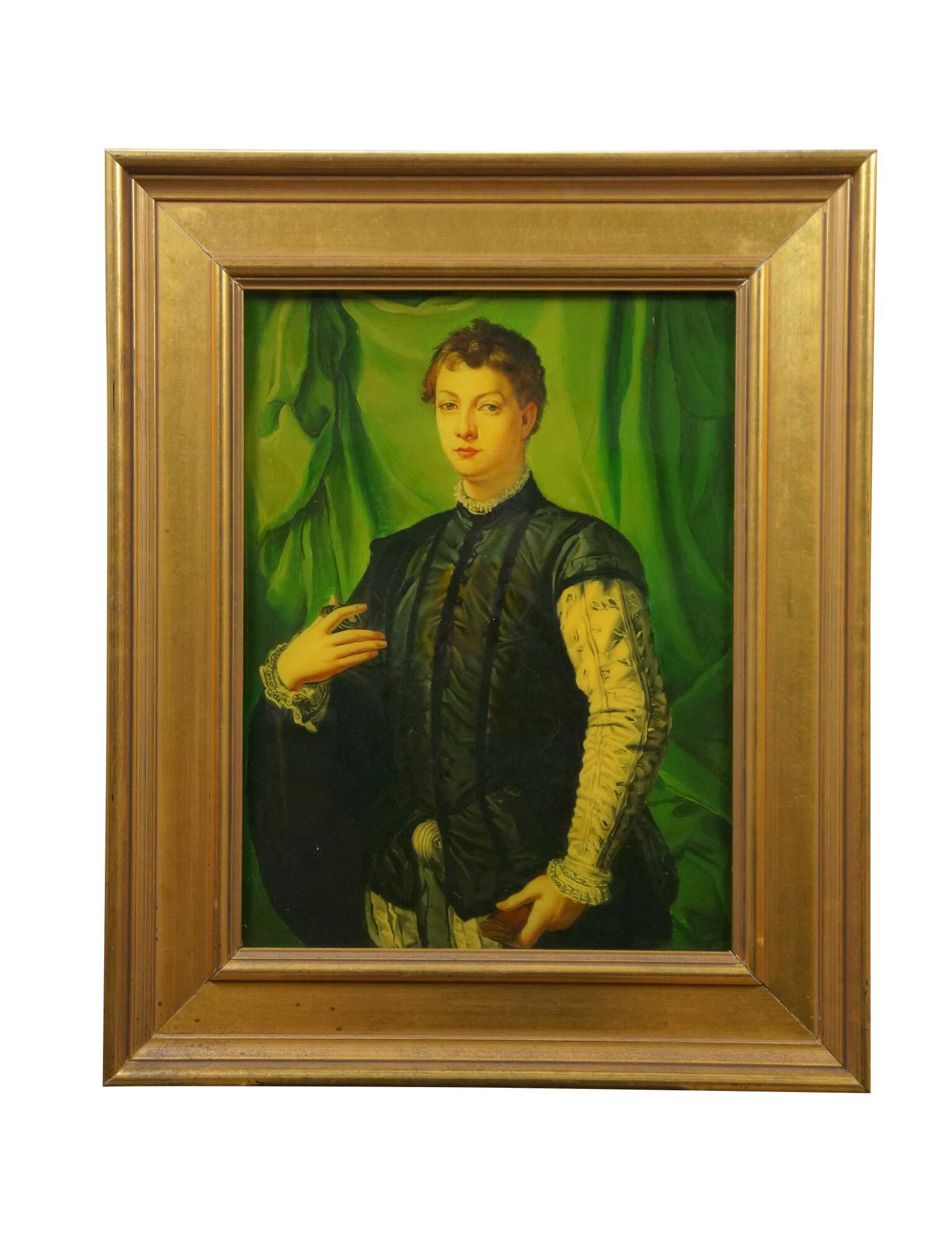
Shipping:
Free Shipping Included
Delivery:
Estimated 2-15 Business Days
Payments:
Credit Card, Check, Cash, PayPal, Apple Pay, Venmo
Returns:
30 Days 100% Money Back Guarantee, Buyer Pays Return Shipping
Description
Late 20th century oil on canvas portrait painting after "Lodovico Capponi" by Agnolo Bronzino, originally painted between 1550-1555. "This proud young aristocrat is Lodovico Capponi (b. 1533), a page at the Medici court. As was his custom, he wears black and white, his family's armorial colors. His right index finger partially conceals the cameo he holds, revealing only the inscription sorte (fate or fortune) — an ingenious allusion to the obscurity of fate. In the mid 1550s Lodovico fell in love with a girl whom Duke Cosimo had intended for one of his cousins. After nearly three years of opposition, Cosimo suddenly relented, but he commanded that their wedding be celebrated within twenty-four hours." (Wikimedia Commons) Beveled gilt composite frame.
"Agnolo di Cosimo (17 November 1503 – 23 November 1572), usually known as Bronzino or Agnolo Bronzino,[a] was an Italian Mannerist painter from Florence. His sobriquet, Bronzino, may refer to his relatively dark skin[1] or reddish hair. He lived all his life in Florence, and from his late 30s was kept busy as the court painter of Cosimo I de' Medici, Grand Duke of Tuscany. He was mainly a portraitist, but also painted many religious subjects, and a few allegorical subjects, which include what is probably his best-known work, Venus, Cupid, Folly and Time, c. 1544–45, now in London. Many portraits of the Medicis exist in several versions with varying degrees of participation by Bronzino himself, as Cosimo was a pioneer of the copied portrait sent as a diplomatic gift. He trained with Pontormo, the leading Florentine painter of the first generation of Mannerism, and his style was greatly influenced by him, but his elegant and somewhat elongated figures always appear calm and somewhat reserved, lacking the agitation and emotion of those by his teacher. They have often been found cold and artificial, and his reputation suffered from the general critical disfavour attached to Mannerism in the 19th and early 20th centuries. Recent decades have been more appreciative of his art." (Wikipedia)
Condition
Good Overall - Gentle wear to frame
Dimensions
18" x 1.5" x 22" (Width x Depth x Height)
You May Also Like